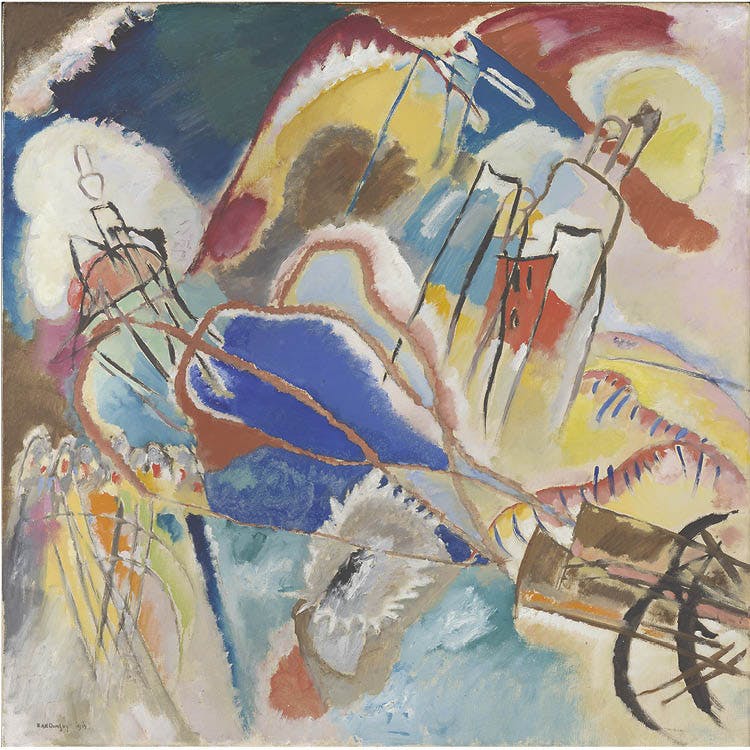
- Magazine Article
- Exhibitions
Poignant Abstraction
Kandinsky’s otherworldly view of the guns of war marks a time of social as well as personal turmoil

Improvisation No. 30 (Cannons), 1913. Vassily Kandinsky (French, born Russia, 1866–1944). Oil on canvas; 111 x 111.3 cm. The Art Institute of Chicago, Arthur Jerome Eddy Memorial Collection, 1931.511. © 2016 Artists Rights Society (ARS), New York
One of 36 works titled Improvisation completed between 1911 and 1914, Cannons of 1913 remains one of Russian artist Vassily Kandinsky’s most influential contributions to modern art. As part of his quest to create purely abstract or nonobjective works, Kandinsky proposed that harmonious colors and forms could express transcendent, otherworldly sentiments instead of the mere surface appearance of a place, person, or thing.
Improvisation No. 30 (Cannons) was last on view at the Cleveland Museum of Art as part of the 1939 exhibition Expressionism and Related Movements. The current presentation places the painting in the context of the museum’s superb German Expressionist collection, including works by Gabriele Münter, Ernst Ludwig Kirchner, Karl Schmidt-Rottluff, Emil Nolde, Lyonel Feininger, Ernst Barlach, and Max Beckmann. Improvisation No. 30 is a particularly apt and poignant companion to Münter’s Future (Woman in Stockholm) of 1917 (on view nearby), commonly interpreted as a symbolic self-portrait painted while waiting for a reunion with Kandinsky after they became separated during the First World War. Between 1909 and 1914, the couple—they were intimate and creative companions for 13 years—shared a home in Murnau near Munich. Yet, by the time Münter painted Future (Woman in Stockholm), the possibility of a reunion had long since passed. When the war erupted in August 1914, Kandinsky and Münter initially fled to Switzerland, but Kandinsky’s status as a foreign national soon forced him to return to Moscow, where he remained until the early 1920s.
In 1917, the year Münter painted Future (Woman in Stockholm), Kandinsky remarried (having divorced his first wife in 1911). Perhaps the expression on Münter’s face provides the perfect if unintended foil to the heady abstraction Kandinsky sought in his own work.

Cleveland Art, September/October 2016